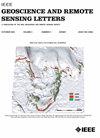Ship Detection Method Based on Scattering Contribution for PolSAR Image
IF 4
3区 地球科学
Q2 ENGINEERING, ELECTRICAL & ELECTRONIC
引用次数: 3
Abstract
Due to the differentiation of polarimetric scattering mechanisms between ships and sea surface, designing the ship detection method in polarimetric synthetic aperture radar (PolSAR) is a potential promising technique and has been paid extensive attention. The complexity of sea clutter and weak scattering of small ships result in a great challenge for high-precision ship detection. In this letter, we investigate the scattering mechanisms of ships to improve the detection performance and propose a novel ship detection method based on the principal contribution of scattering mechanisms. First, the seven-component model-based decomposition (SCMD) is used to analyze the scattering mechanisms of ships. Second, the primary scattering contribution and local contrast (SCLC) mechanism are used to enhance ships, especially small ships. Finally, the threshold segmentation is used to realize the extraction of ships. Experimental results by real PolSAR data not only verify the rationality and effectiveness of the constructed detection metric but also show the clear superiority of the proposed detection method, which can encourage further application of polarimetric scattering mechanisms in ship detection.基于散射贡献的PolSAR图像舰船检测方法
由于船舶与海面之间的极化散射机制存在差异,设计极化合成孔径雷达(PolSAR)中的船舶探测方法是一项极具发展前景的技术,受到了广泛的关注。海杂波的复杂性和小型船舶的弱散射给高精度船舶探测带来了很大的挑战。本文研究了舰船的散射机制以提高探测性能,并提出了一种基于散射机制主贡献的舰船探测新方法。首先,采用基于七分量模型的分解(SCMD)方法对舰船散射机理进行分析。其次,利用初级散射贡献和局部对比度(SCLC)机制对船舶特别是小型船舶进行增强。最后,利用阈值分割实现船舶的提取。真实PolSAR数据的实验结果不仅验证了所构建的检测度量的合理性和有效性,而且表明了所提检测方法的明显优越性,为极化散射机制在舰船检测中的进一步应用提供了理论依据。
本文章由计算机程序翻译,如有差异,请以英文原文为准。
求助全文
约1分钟内获得全文
求助全文
来源期刊

IEEE Geoscience and Remote Sensing Letters
工程技术-地球化学与地球物理
CiteScore
7.60
自引率
12.50%
发文量
1113
审稿时长
3.4 months
期刊介绍:
IEEE Geoscience and Remote Sensing Letters (GRSL) is a monthly publication for short papers (maximum length 5 pages) addressing new ideas and formative concepts in remote sensing as well as important new and timely results and concepts. Papers should relate to the theory, concepts and techniques of science and engineering as applied to sensing the earth, oceans, atmosphere, and space, and the processing, interpretation, and dissemination of this information. The technical content of papers must be both new and significant. Experimental data must be complete and include sufficient description of experimental apparatus, methods, and relevant experimental conditions. GRSL encourages the incorporation of "extended objects" or "multimedia" such as animations to enhance the shorter papers.
 求助内容:
求助内容: 应助结果提醒方式:
应助结果提醒方式:


